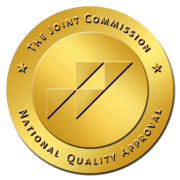Twin Town Outcomes & Benefits
Evidence demonstrates that Twin Town clients significantly reduce their potential for relapse while diminishing their needs for emergency medical services.
9 to 12 month post-discharge follow-ups on client-patients who engaged in treatment at Twin Town ago, (N=42 regardless of their discharge status):
were abstinent for the past three months
were abstinent since engaging in treatment
avoided further arrest
avoided the need for emergency services
continue in 12-Step Recovery
encounter improvement at work/ with their career
engaged in continued, community-based therapy
Twin Town Treatment Centers coordinates SUD treatment with community-based medical, mental health, and other providers of treatment and support through appropriate client-patient centered consent and case-management.
Twin Town doesn’t fragment existing therapeutic alliances by trying to provide everything to the client-patient. We cross-refer and coordinate care.
Evidence of Reduced Emergency Department Visits Post-Treatment
Twin Town contracted with PATH, CCM which conducted a substance use disorder (SUD) treatment outcome study using a national data set of 260M lives over 3 years. The study compared Twin Town data to all other Southern California SUD treatment facilities. Annual post-treatment emergency department (ED) visits per patient were measured.
Twin Town patients demonstrated significantly lower ED utilization compared with the comparative group (patients treated elsewhere):
2017
2018
2019
Twin Town patient emergency department visits, post-discharge were 40-50% lower than the average for patients from other Southern California SUD treatment programs.
UCLA, SAMHSA, DHCS and Advocates for Human Potential (AHP) selected Twin Town Treatment Centers to participate in a pilot demonstration of evidence based treatment of stimulant disorders. The goal is to create best-practices in the treatment of methamphetamine and cocaine use disorders. Clinical staff training and supervision, and evidence based treatment implementation and measurement will further our expertise at engaging and effectively treating stimulant use disorders.
Information may be accessed at http://www.uclaisap.org/oasis-tta/html/projects/stimulant-use-disorder-project.html.
DO YOU HAVE ANY ADDITIONAL QUESTIONS OR COMMENTS?
866.594.8844
contactus@twintowntreatmentcenters.com

